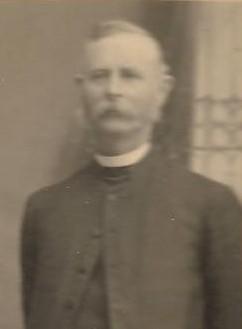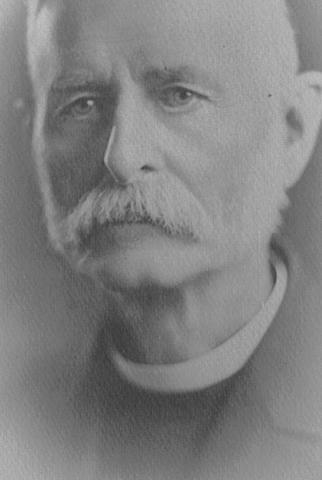

Annotations From the Archive: John Mallory Bates
Often in Red Cloud, when we speak about John Mallory Bates, we’re speaking of his role at the Grace Episcopal Church. He served there from 1903–1929, and his service was honored, as you’ll remember from last month’s articles, from last month’s Annotations, with a beautiful Emil Frei window. As important as Rev. Bates’s role was in Red Cloud’s church community, he was an equally important part of Nebraska’s scientific community.
In a recent addition to our archival collections at the National Willa Cather Center, Cather writes to “Mr. Perrin,” whose family hailed from the Sandhills of Nebraska. Prior to his appointment in Red Cloud, Bates served in both North Platte (1886–1888) and Valentine (1888–1902). In her letter, Cather asks Mr. Perrin if his father might have known Rev. Bates, describing him as "one of the best Nebraska botanists, and the Rector of our little Episcopal church in Red Cloud.”
In fact, Bates was much more than that. After completing his own education at Trinity College and Berkeley Divinity School in Connecticut, he met and married Sarah Glazier in 1876; like Bates, Sarah Glazier Bates was well-educated and scientific-minded. Before her marriage she taught Astronomy and Mathematics at Wellesley College, the first professor at that college to teach those subjects. Bates, too, was a teacher before taking his position in the North Platte church.
But it was when he arrived in Valentine that he fully immersed himself in the systematic study of botany and ornithology; Bates was responsible for more than twenty Episcopal mission stations in north-central Nebraska, and in his travels by horseback between them, he collected and documented the flora and fauna of his adopted state. He published a number of papers on birds over the years; he was known for his collaborative work, and Professor Lawrence Bruner used Bates’s extensive notes on the birds of northern Nebraska when he published Nebraska Birds. In the weeks before his death in 1930, Bates had presented at the Nebraska and Iowa Ornithologist’s Unions at Omaha; his research was on “Instinct and Reason in Birds.”
He is most known today as an important amateur botanist, documenting Nebraska’s many unfamiliar plants. His 1914 article “On the Sedges of Nebraska” is probably his most widely available work today, and he was particularly interested in forage plants and their diseases. Willa Cather was chided by Bates for including butterfly milkweed (Asclepias tuberosa) in her novel My Ántonia; Bates didn’t believe it to be extant in the area. Cather, however, enlisted the help of Carrie Miner Sherwood and her sister Mary Miner Creighton to locate the plant, which Cather was sure could be found in Webster County. Once the two women found it, Sherwood presented the plant to Bates, who planned to add the specimen to his herbarium. After his death, the University of Nebraska acquired his herbarium of more than 12,000 specimens for $1,000.
In 1900, Bates wrote, "It falls to the lot of some through lack of time or ability to confine themselves to the elementary work in natural science of observing and reporting. I am one of those who are thus limited. I am, I regret to say, unable to make the subject anything more than an incident in my life and a side issue on the nature study I love so well." But his influence on Nebraska nature study—and on a young writer who shared his interests in plants and animals—is inspiring.
Sources:
- The Willa Cather Foundation Collection and the Ed and Jeri Shute Collections at the National Willa Cather Center in Red Cloud.
- The Willa Cather Newsletter and Review. Vol. 45, Summer 2001.
- The Blue Book of Nebraska Women: A History of Contemporary Women. Winona Evans Reeves, ed. 1916.
- “On the Sedges of Nebraska (Family Cyperaceae).” Published in The University Studies of the University of Nebraska, vol. XIV.
- “Clergyman helps with sugarbeet disease.” Robert M. Harveson in Scottsbluff Star-Herald.
- The Auk: A Quarterly Journal of Ornithology, vol XLVIII, January 1931.
- Taxonomic Literature, 2nd ed.
